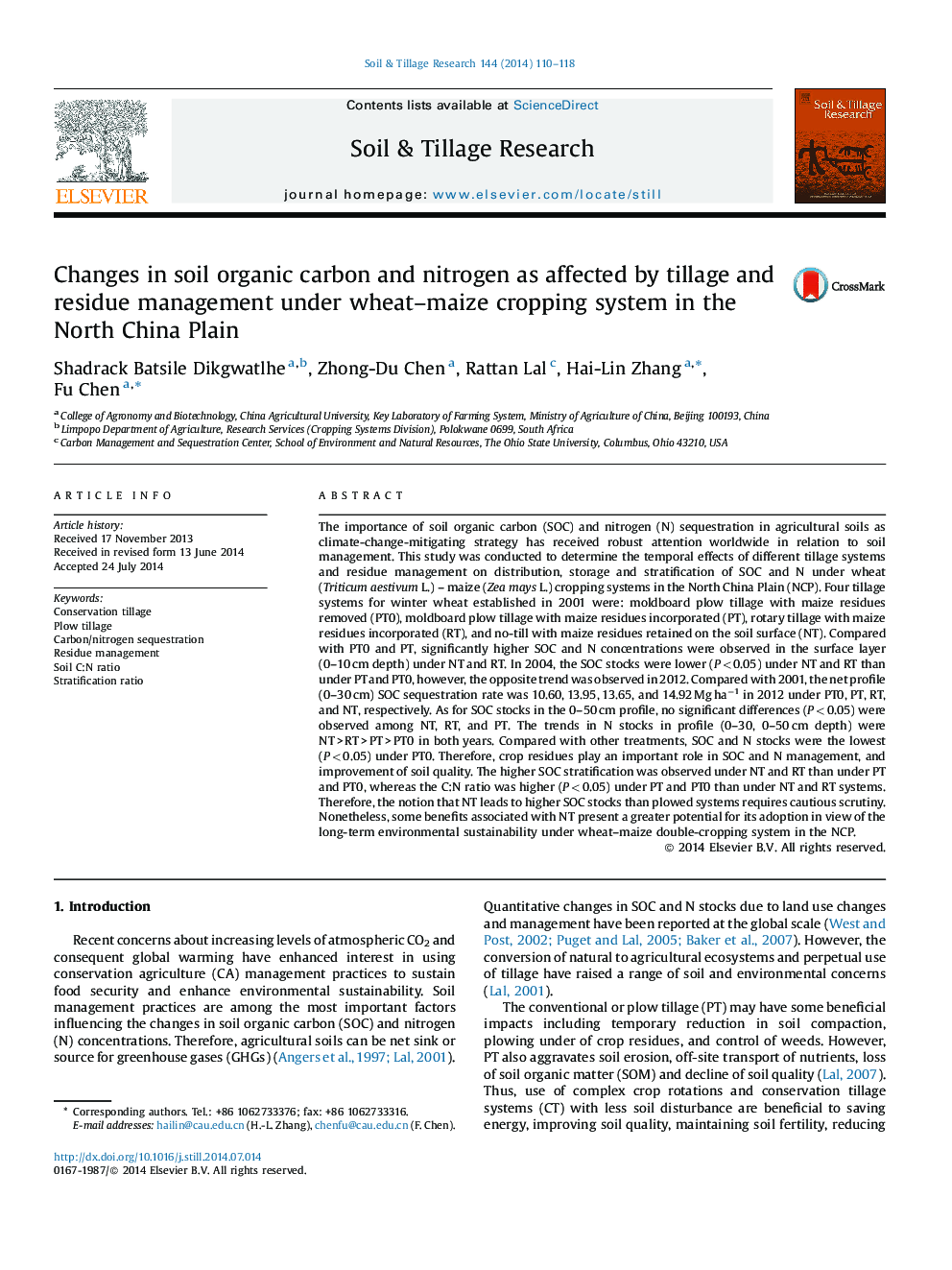| کد مقاله | کد نشریه | سال انتشار | مقاله انگلیسی | نسخه تمام متن |
|---|---|---|---|---|
| 305669 | 513043 | 2014 | 9 صفحه PDF | دانلود رایگان |
• We assessed short and long term tillage effects on changes of SOC and N.
• The SOC, N, C/N ratio, stratification ratio and BD were affected by tillage intensity and residue management.
• The SOC and N concentration decreased with increased depth, while BD increased with depth.
• Crop residue retention either by soil incorporation or surface placement is critical to SOM maintenance and soil quality improvement.
• The data herein, are a useful tool in monitoring soil quality changes induced by tillage.
The importance of soil organic carbon (SOC) and nitrogen (N) sequestration in agricultural soils as climate-change-mitigating strategy has received robust attention worldwide in relation to soil management. This study was conducted to determine the temporal effects of different tillage systems and residue management on distribution, storage and stratification of SOC and N under wheat (Triticum aestivum L.) – maize (Zea mays L.) cropping systems in the North China Plain (NCP). Four tillage systems for winter wheat established in 2001 were: moldboard plow tillage with maize residues removed (PT0), moldboard plow tillage with maize residues incorporated (PT), rotary tillage with maize residues incorporated (RT), and no-till with maize residues retained on the soil surface (NT). Compared with PT0 and PT, significantly higher SOC and N concentrations were observed in the surface layer (0–10 cm depth) under NT and RT. In 2004, the SOC stocks were lower (P < 0.05) under NT and RT than under PT and PT0, however, the opposite trend was observed in 2012. Compared with 2001, the net profile (0–30 cm) SOC sequestration rate was 10.60, 13.95, 13.65, and 14.92 Mg ha−1 in 2012 under PT0, PT, RT, and NT, respectively. As for SOC stocks in the 0–50 cm profile, no significant differences (P < 0.05) were observed among NT, RT, and PT. The trends in N stocks in profile (0–30, 0–50 cm depth) were NT > RT > PT > PT0 in both years. Compared with other treatments, SOC and N stocks were the lowest (P < 0.05) under PT0. Therefore, crop residues play an important role in SOC and N management, and improvement of soil quality. The higher SOC stratification was observed under NT and RT than under PT and PT0, whereas the C:N ratio was higher (P < 0.05) under PT and PT0 than under NT and RT systems. Therefore, the notion that NT leads to higher SOC stocks than plowed systems requires cautious scrutiny. Nonetheless, some benefits associated with NT present a greater potential for its adoption in view of the long-term environmental sustainability under wheat–maize double-cropping system in the NCP.
Journal: Soil and Tillage Research - Volume 144, December 2014, Pages 110–118
